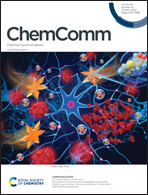Unlocking the computational design of metal–organic cages
Abstract
Metal–organic cages are macrocyclic structures that can possess an intrinsic void that can hold molecules for encapsulation, adsorption, sensing, and catalysis applications. As metal–organic cages may be comprised from nearly any combination of organic and metal-containing components, cages can form with diverse shapes and sizes, allowing for tuning toward targeted properties. Therefore, their near-infinite design space is almost impossible to explore through experimentation alone and computational design can play a crucial role in exploring new systems. Although high-throughput computational design and screening workflows have long been known as powerful tools in drug and materials discovery, their application in exploring metal–organic cages is more recent. We show examples of structure prediction and host–guest/catalytic property evaluation of metal–organic cages. These examples are facilitated by advances in methods that handle metal-containing systems with improved accuracy and are the beginning of the development of automated cage design workflows. We finally outline a scope for how high-throughput computational methods can assist and drive experimental decisions as the field pushes toward functional and complex metal–organic cages. In particular, we highlight the importance of considering realistic, flexible systems.

- This article is part of the themed collections: Celebrating our 2025 Prizewinners and Chemical Communications HOT Articles 2022


 Please wait while we load your content...
Please wait while we load your content...